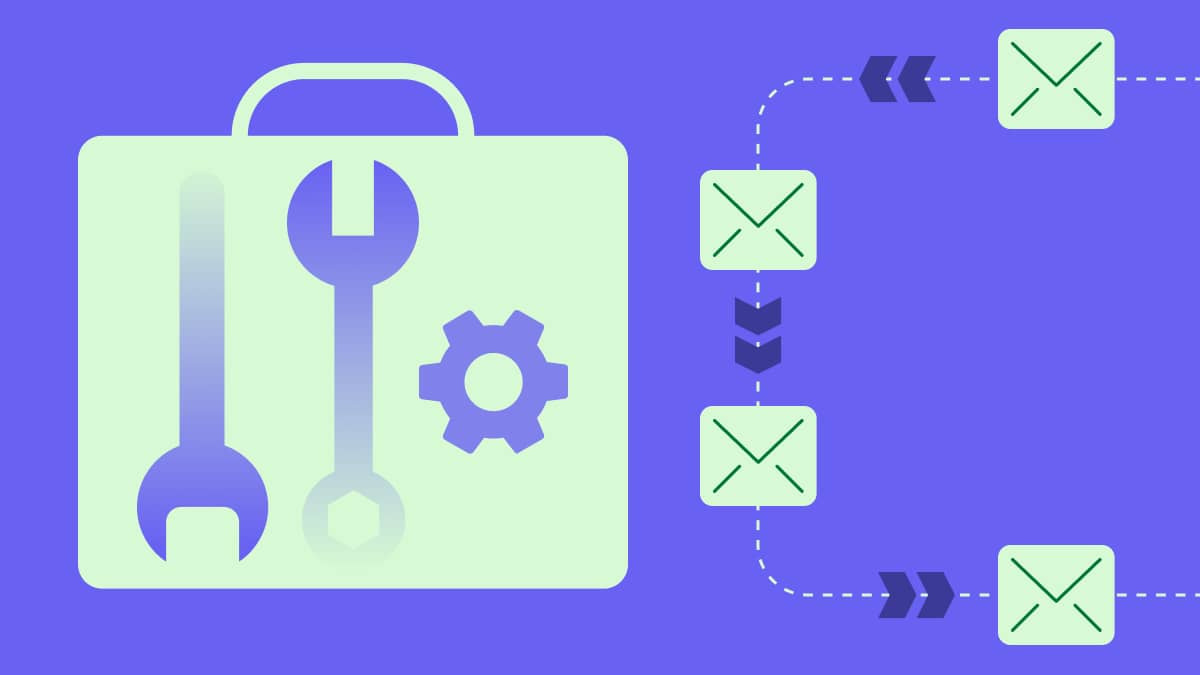Connecting to customers is key to building strong relationships and growing your small business. Yet tracking calls and follow-ups takes time, especially when using basic tools.
The right call center software handles all the admin for you. It logs calls and automates routine tasks so your team can focus on sales and support.
In this article, you’ll discover the best call center software for small businesses. Find the perfect tool to help you respond to customers faster and close more deals.
9 best call center software solutions for small businesses
There’s no one-size-fits-all call center solution. Some platforms support outbound sales, others focus on customer service and a few offer a mix of both.
Ultimately, your choice of contact center as a service (CCaaS) tool depends on your team’s size, business goals and how you connect with customers.
To help you decide, here’s a breakdown of each tool’s features and what makes them stand out.
Outbound-focused call center platforms (for sales-driven teams)
Outbound call center software helps sales teams reach more leads in less time. These tools include features like power dialers, call logging and data syncing to keep your sales pipeline moving steadily.
Note: Outbound call center tools focus on contacting prospects and closing new sales, while inbound software helps you respond to incoming customer queries.
Here are the best outbound sales platforms, their key features, ideal use cases and how each supports faster outreach.
1. Pipedrive: best call center software for CRM-first call management
Pipedrive is a sales-focused customer relationship management (CRM) solution that provides essential calling features for small businesses. While it doesn’t replace call center software, its built-in tools and integrations manage calls directly within your call center CRM.
How small teams use Pipedrive for calls:
Make and log calls from user-friendly contact and deal views in the web or mobile app
Start calls from your desktop that ring through your mobile
Automate follow-ups and reminders after each logged call by setting custom triggers, saving time on manual data entry
View full call history alongside email, notes and activities for each deal
Integrate a wide range of call center solutions, including JustCall, CloudTalk, Kixie and Aircall, to increase call center capabilities like call routing (more on these later)
Here’s a closer look at how these call features work in Pipedrive.
You’ll see the customer’s phone number in Pipedrive’s contact view. Next, click Start call.

You can leave notes after each call about how the conversation went and what you need to do next. These details will appear in your call history.

You can also call contacts directly from the Pipedrive mobile app. Tap the phone icon to launch the call through your native dialer.

If you prefer using your mobile for calls but work mainly from a desktop, Pipedrive’s web-to-mobile feature bridges the gap.
With the mobile app installed, you can start a call from the browser and have it ring through your phone (on the Growth plan and higher).

After a call ends, Pipedrive prompts you to log the activity. Add notes, schedule a follow-up or trigger workflow automations like reminders or deal updates.
Every logged call appears in the contact’s timeline, so your team always knows what happened last.
Pipedrive also offers call tracking and insights. You can filter calls by outcome, rep or date and review activity to see which calls convert into sales deals.

These insights help sales managers spot performance trends and provide better sales coaching.
The takeaway: Pipedrive ties your call activity to your sales pipeline, helping your team stay organized without switching tools. For small businesses that rely on outbound sales calls, it’s a flexible way to manage everything from one place.
2. CloudTalk: best high-volume outbound call center software
CloudTalk is a cloud-based solution for outbound and blended sales teams (that also provide support – more on these later). It offers features like power dialing, call tagging and real-time analytics, with native integrations for CRMs like Pipedrive.

CloudTalk provides local numbers for over 160 countries to improve connection rates. For an additional fee, users can add conversational intelligence to get AI-generated call summaries, sentiment analysis and topic extraction.
How outbound teams use CloudTalk:
Get unlimited inbound calls and 500 outbound minutes per user per month (Starter plan)
Analyze key call center metrics like average handling time and agent activity (Essential plan) to improve productivity
Integrate with your CRM and other tools for added functionality (Essential plan)
Handle more calls with fewer people with custom interactive voice response (IVR) menus like “Press 1 for support” (Essential plan)
Run automated outbound call campaigns with a power dialer that pulls numbers directly from your contact list (Expert plan)
The takeaway: CloudTalk’s Starter plan gives outbound teams the basic tools to manage and plan sales calls. For advanced features like analytics and CRM integration with tools like Pipedrive, you’ll need one of the higher tiers.
3. JustCall: best for outreach with voice and SMS
JustCall is a cloud-based business phone system that allows sales teams to operate a mix of calls, SMS and other communication channels. It integrates with CRMs like Pipedrive to streamline outreach and follow-up activities.

JustCall’s artificial intelligence (AI) tools include call transcription, sentiment analysis, real-time agent assistance and more. These features are only available on the Pro Plus and Business plans.
How sales teams use JustCall:
Automatically transcribe calls and quickly generate summaries with AI (Team plan)
Set up custom interactive voice response (IVR) menus to route calls efficiently (Team plan)
Run automated outbound campaigns using predictive dialers that call multiple numbers at once and connect answered calls to available agents (Pro plan)
Monitor and coach agents live during calls for added support (Pro plan)
Use multi-channel AI note-taking and sentiment analysis to get more context (Pro Plus plan)
The takeaway: JustCall offers essential calling and texting features on its Team plan. You may need to invest in a higher tier to access AI features and better tools for outreach and analysis.
4. Kixie: best for automated outbound sales
Kixie is a calling and texting app that connects to your CRM to reduce manual outreach steps. It provides a business phone service, SMS capabilities and rule-based routing from the lowest-tier plan.

You can set up automated actions – like sending a text or placing a call – based on CRM updates. The app also provides a sales leaderboard, reporting dashboard and the option to create custom IVR menus.
Kixie integrates with Pipedrive to provide power dialing, local area codes, AI-generated call summaries and more.
How sales teams use Kixie:
Launch the Kixie Power Dialer to click-to-call or click-to-text numbers from websites (Integrated plan)
Set up ring groups to route each call to the right agent (Integrated plan)
Show sales management every agent’s live status and daily performance (Integrated plan)
Leave pre-recorded messages and speed up outreach with the voicemail drop feature (Professional plan)
Detect human speech, track sentiment and reduce spam filtering using AI (Ultimate Revenue plan)
The takeaway: Kixie’s base plan includes various sales outreach tools, and its more expensive tiers offer better scalability. Paid add-ons enable AI-powered features and spam reduction capabilities. Each tier comes with a seven-day free trial.
Blended call center platforms (for sales and support)
Blended call center software supports both sales and customer service teams, which is especially useful for small business founders and sales leads juggling multiple roles. These tools combine outbound features with inbound call routing, IVR systems and shared inboxes.
Here are the top blended call center platforms, with a breakdown of core features, use cases and how each handles both sides of the customer experience.
5. Ringover: best for teams who need an all-in-one communication suite
Ringover is a communication platform that includes voice over internet protocol (VoIP) calls, messaging and video. Teams use it to handle phone sales and respond to incoming support requests from the same system.

For outbound interactions, Ringover provides click-to-call, call recording and automatic activity logging through CRM integrations. For inbound, it includes IVR menus, call queues and smart routing.
Teams can also host quick video calls internally or use chat to manage handovers or check details mid-call. The Ringover-Pipedrive integration lets you call from the CRM and log activity to the relevant deal.
How teams use Ringover:
Make unlimited calls to 90 countries, with a local number in 43 (Smart plan)
Sync your mobile, web and desktop apps for better team collaboration (Smart plan)
Route customers with advanced IVR, call groups and queues (Business)
Provide sales rep coaching with double listening and whispering options (Business)
Use the Power Dialer and voicemail drop to speed up outreach (Advanced)
The takeaway: Ringover’s Smart plan combines internal and external call handling for teams switching between sales and support tasks. For omnichannel messaging and more numbers per agent, you’ll need to subscribe to add-ons.
6. Toky: best for startups needing a simple voice solution
Toky is a cloud-based voice-calling system for sales and support teams. Teams can make and receive calls through a desktop or mobile app and set up forwarding, links and queues to simplify call handling.

The platform includes basic monitoring tools like call recording and real-time status visibility on the higher plans.
How teams use Toky:
Create agent groups and basic routing rules to stay responsive without a dedicated support team (Entrepreneur plan)
Integrate with most CRMs, including Pipedrive (Entrepreneur plan)
Set up custom IVR phone trees like “Press 1 for sales, 2 for support” to save time by directing callers to the right team without manual transfers (Entrepreneur plan)
Send text messages and make calls with per message/call charges (Entrepreneur plan)
See basic reports (Entrepreneur plan) or complete call KPIs (Business and Enterprise plans)
The takeaway: Toky provides voice features and CRM syncing for small teams to manage calls. For features like Power Dialer, call monitoring and voicemail, you’ll need to pay per number or per minute – which may decrease cost-effectiveness.
7. VoiceSpin: best AI call center software
VoiceSpin is a cloud contact center solution for handling large call volumes. Its higher plans include a predictive dialer, skill-based routing and live monitoring tools. The platform also integrates with CRM systems like Pipedrive.

Sales teams use the predictive dialer to place multiple calls simultaneously and connect only when someone answers. On the support side, teams route incoming calls based on language, product line or customer tier.
How teams use VoiceSpin:
Route calls efficiently based on ring groups and set up custom IVR menus (Basic plan)
Monitor and record calls in real-time and see reporting and analytics (Basic plan)
Use an AI auto dialer and local caller IDs to improve pickup rates (Advanced plan)
See number reachability scores and send bulk SMS messages to enhance productivity (Advanced plan)
Use AI to summarize conversations, analyze speech and send quick replies (Enterprise plan)
The takeaway: VoiceSpin’s Basic plan provides call routing, reporting and monitoring tools for outreach and service. AI features that automate outreach and set up custom call campaigns are available on the Enterprise plan.
8. KrispCall: best for remote teams
KrispCall is a cloud-based phone system for remote and distributed teams. It provides virtual phone numbers, a unified workspace and routing tools.

Teams can assign local, toll-free or international numbers to different departments. KrispCall charges per minute (for calls) or segment (for messaging), regardless of your plan.
How teams use KrispCall:
Have team members access and update the same threads in a shared workspace (Essential plan)
Use a built-in lightweight CRM or integrate with more powerful options like Pipedrive (Essential plan)
Listen in to calls, whisper to team members on calls or talk to the customer directly for prompt support (Essential plan)
Use Power Dialer to skip unanswered calls and leave automated greetings (Standard plan)
Record calls and get insights and reports about key metrics (Standard and Enterprise plan)
The takeaway: KrispCall provides features for remote teams to collaborate on sales and support. While the Essential plan offers the most necessary telephony features, you may want to upgrade to access outreach and analysis tools as your team scales.
Inbound-focused call center solutions (for support teams)
Inbound call center software focuses on receiving customer phone calls. These platforms include call routing, queues and shared inboxes to direct inquiries to the right person and reduce response times.
Here are the top inbound call center tools, with a breakdown of how each handles support requests for small teams.
9. Twilio Flex: best for developers building custom call workflows
Twilio Flex is a communications platform that lets you create a custom interface to match your business needs. You can customize the routing, call flow, layout and more to provide a personalized customer experience.

You can pay per hour, scaling up or down with seasonal uptime fluctuations. Twilio Flex also offers per-user pricing, which gives you predictable costs.
How teams use Twilio:
Add custom channels (like WhatsApp, Facebook Messenger and WebChat) and manage them through Flex Twilio’s interface
Integrate customer data from custom sources like your CRM for enhanced visibility
Use Studio, a drag-and-drop builder, to craft and streamline call flows
Automate actions that trigger after agents handle different tasks
Add custom widgets and integrations to get more features as required
The takeaway: Twilio controls the inbound call flow for teams that prefer to build custom on-site phone solutions rather than use out-of-the-box software. It offers 5,000 hours of use as part of a free trial.
Why call center software matters for small businesses
Contact center software provides a single interface for managing outreach and customer support. It streamlines communications for small teams that wear many hats, saving time and sales budget.
It goes beyond calls and messaging – with the right call center software, you can:
Monitor call center agent performance to provide coaching and quality assurance
Optimize customer interactions with automatic call distribution (ACD), insights and follow-ups
Prevent tasks from slipping through the cracks, improving customer satisfaction
Reduce wait times and customer complaints with features like power dialers and voicemail drops
Improve live agent productivity and route simple callback tasks to website chatbots
Automatically refer customers to self-service options like knowledge bases
You gain even more benefits when your virtual call center syncs with your CRM. For instance, you can track customer engagement across any digital channel. The call center will automatically link the information to a unified customer profile, giving your sales team crucial context for selling.
What to look for in call center software that connects with your CRM
There are many types of call center software, each with varying levels of CRM integration. If you want to get the most out of your call center operations, look for these key call center features:
Call center software feature | Why it matters |
Easy, built-in CRM integration | Many cloud-based call centers have built-in integrations with cloud CRM software like Pipedrive. Connecting the two is simple, improving the time to value. Watch out for solutions that require custom APIs or third-party connections. These integrations may need a developer to set up. |
Two-way sync | Both platforms have the complete context, giving help desk and sales teams full visibility to improve the customer journey. The Pipedrive platform supports two-way sync. |
Real-time analytics | Real-time analytics give you immediate visibility into call activity. When integrated with your CRM, these insights help you prioritize customers based on metrics like resolution status. Integrations bridge live call performance with customer records, so sales or support teams always have the latest insights without switching tools. |
Power dialers and automation | Some power dialers automate outbound calling from contact lists in your CRM. Call logging and task creation happen automatically in the background. These features eliminate repetitive steps like copying contact details or logging calls manually. |
Connecting your call center and CRM software lets you make the most of these software features. Next, you’ll learn how to create call center integrations with Pipedrive.
How to connect your call center software to Pipedrive
Choose a call center software provider that integrates with Pipedrive. Tools like JustCall and CloudTalk offer native integrations in the Pipedrive Marketplace.
Ensure you’re logged into your Pipedrive account and your call center tool with admin access. To connect them, you’ll need permission on both sides.
In your call center software, go to the integrations or settings section and find Pipedrive in the list of available connections. Click to link them, and the platform will redirect you to Pipedrive so you can log in and approve access.
Here’s how the Pipedrive integration looks in JustCall:

Next, set your sync preferences. You can usually choose what information to share (like contacts, call logs or notes) and whether updates go both ways or just one.

If possible, map your fields so data flows into the right places. For example, link your call center’s “contact name” field to the correct field in Pipedrive.
To ensure everything’s working, log a test call and check that it appears correctly in Pipedrive under the relevant contact or deal.

Once you’re live, show your team how the integration works so they can operate more efficiently. Point out where the platform logs calls are and how to trigger new ones in Pipedrive (if your tool supports that).
Existing Pipedrive users can also add integrations directly from their CRM dashboard.
Search for a compatible tool on the Pipedrive Marketplace, then click Install. Follow the instructions on the tool’s Marketplace page to finalize the installation, sync your data and get started.
Final thoughts
When your call center and CRM work together, your team spends less time chasing details and more time closing deals – which is crucial for small businesses with limited resources. Connecting the two means calls, notes and follow-ups log automatically so nothing slips through the cracks.
Pipedrive integrates with a range of the best call center solutions. Start a 14-day free trial today to see how connecting Pipedrive to your call center can streamline customer interactions and boost sales.







